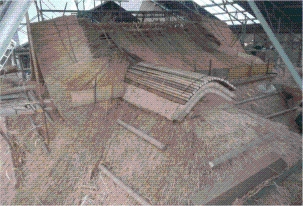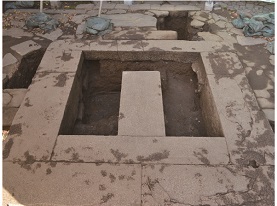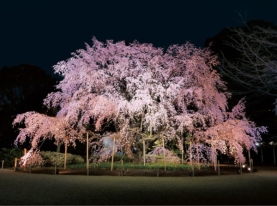Gardens
Metropolitan parks include nine gardens, which are valuable assets of historical and cultural significance dating from the Edo period. They are all cultural properties designated by the national government or TMG, and among the most distinguished gardens in Japan.
The management and maintenance of the gardens is carried out in a way to ensure that gardening skills are passed down to younger generations. Also, efforts are being taken to make the gardens more attractive and accessible to a wider range of people. For example, the gardens are open on the 2nd and 3rd of January to accommodate visitors during the New Year’s holiday season. Other seasonal programs and events include extended hours during the spring and summer, nighttime lighting during the cherry blossom season and when the foliage changes color in autumn, and holding a “stamp rally” to promote the beautiful fall colors at each of the gardens.
The Tokyo Parks Navi service, a multilingual application that provides easy-tounderstand audio and visual content for exploring metropolitan parks in five languages, was launched in fiscal 2016. The service is currently available at Hama-rikyu and Rikugien gardens.
At the Hama-rikyu Gardens and Koishikawa Korakuen Gardens, which have been designated by the national government as special places of scenic beauty and also special historic sites, the Breau is advancing the restoration of these daimyo gardens, created by feudal lords of the Edo period.
With the aim of recreating the feel of a daimyo garden and allowing visitors to experience the culture of the Edo period, a restoration project is underway at the Hama-rikyu Gardens to restore structures, including teahouses destroyed during World War II. Following completion of the restoration of the Matsu-no-Ochaya and Tsubame-no-Ochaya teahouses, restoration of the Taka-no-Ochaya teahouse was completed in fiscal 2017.
At the Koishikawa Korakuen Gardens, a restoration project on the entire park, the first of its kind since restoration carried out following World War II, has begun. Restoration is being carried out on the Daisensui garden pond, modeled on Lake Biwa, which plays a prime role in shaping the landscape of the gardens. The restoration of Engetsukyo Bridge was completed in fiscal 2012. And, work on other structures in the garden continues to progress, with restoration of the Tokujindo, Kuhachiya and Maroya structures completed in fiscal 2013, and Ishibashi and Akamon in fiscal 2014. In preparation for restoration of the east gate, which was lost to fire during the war, projects such as an excavation survey are being conducted in fiscal 2017.
-
 Restoration work on the Taka-no-Ochaya teahouse
Restoration work on the Taka-no-Ochaya teahouse -
 Excavation around the site of the Karamon
Excavation around the site of the Karamon




